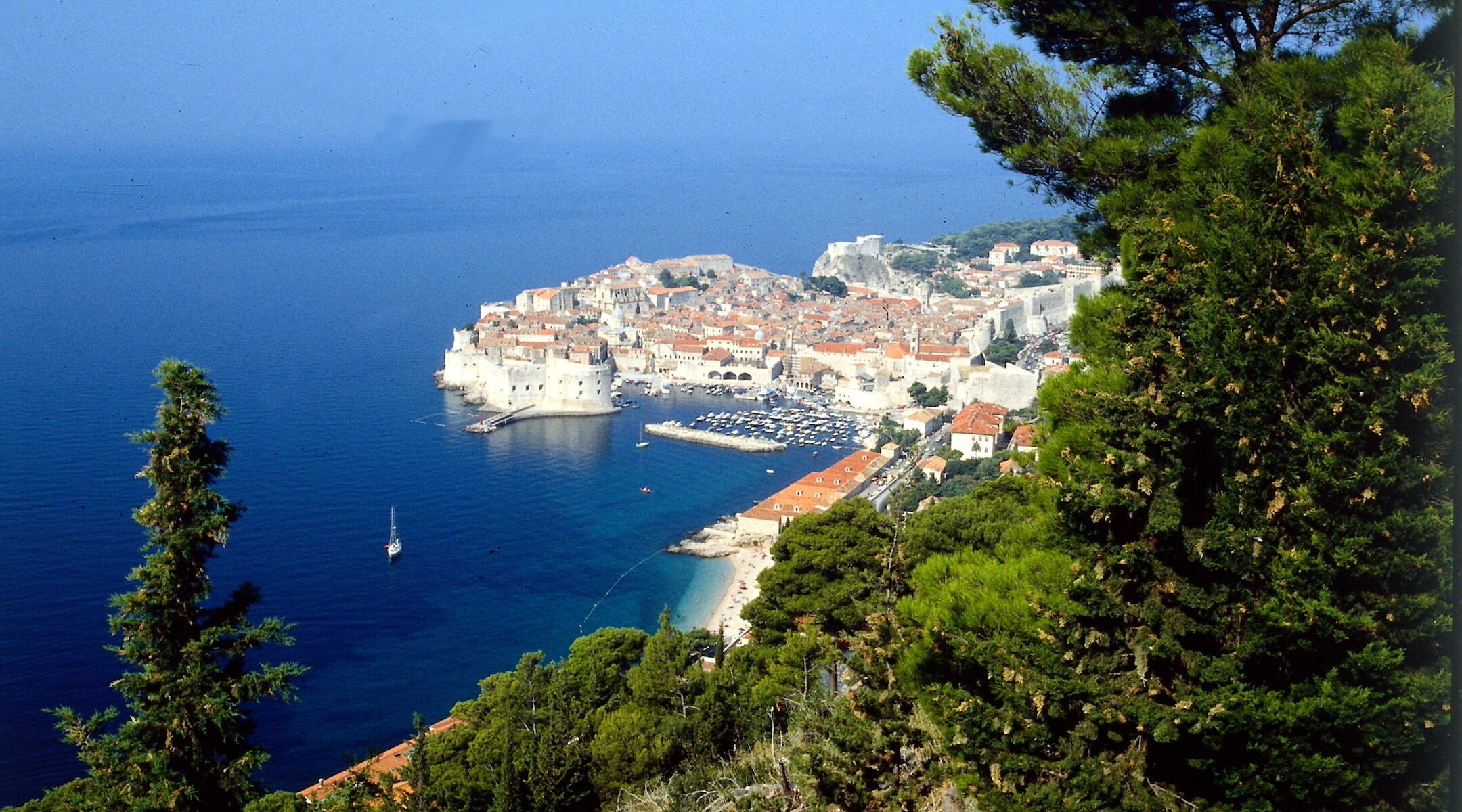Dr. Bruno Horovic is a busy man. In addition to serving as head of the Jewish community here, Horovic is working on turning Dubrovnik’s historic synagogue into a museum of Judaica.
He is also attempting to locate the city’s Jewish archives, which were stolen by the Nazis in 1941.
It is all in a day’s work for the 72-year-old retired pulmonary diseases specialist who leads a community of just 45 members.
Despite the small size of the Jewish community in this city on the Adriatic Sea, Horovic is convinced that it has a bright future.
Relations between Jews and Croatians are “better now than they have been for a long time,” he said at an October conference on the history of Jews of the Adriatic that was held here.
“There have been Jews here for more than 500 years, and I am sure that this community will continue to exist.”
The city’s Jewish community suffered along with the rest of Dubrovnik when the city was besieged by an army of Serbia and Montenegro in 1991 and 1992, during the early phases of the Yugoslav civil war.
Months of indiscriminate shelling from the hills outside the city took an inevitable toll not only on the people of Dubrovnik, but on its buildings as well.
The synagogue, one of Europe’s oldest, took two direct shell hits, but the damage was repaired immediately.
Now, as Horovic discusses the future of Dubrovnik’s Jewish community, he does not even mention the recent war.
He focuses instead on keeping observance and traditions alive for the small community.
“We are together for every festival, for Chanukah, for Pesach, maintaining our traditional Jewish customs,” he says. “On Pesach, we had wine and matzah. The mayor and the zupanic (a regional official) came for Rosh Hashanah, and it was on television so that everyone knows that Jews exist here.”
The small size of the community may be deceptive. The walled city of Dubrovnik has a population of 4,700, almost exactly the number it had for centuries.
At its height in the 16th century, the city’s Jewish community numbered only 250.
At the beginning of World War II, about 80 Jews lived in Dubrovnik; 27 of them died in the Holocaust.
The comparatively high survival rate — Croatia as a whole lost 80 percent of its Jews to the Final Solution — is due to an accident of geography.
Dubrovnik lies across the Adriatic from Italy. Its Jews were deported to the relatively mild Italian concentration camps rather than to German- or Croatian- administered camps.
Survivors made their way to Israel, the United States, South America. Some, like Horovic, returned to Dubrovnik after the war.
Complicating efforts to maintain traditions, Dubrovnik’s Jews have no rabbi or regular Shabbat services.
The community’s last speaker of Ladino, the hybrid of Spanish and Hebrew that was the common parlance of Dubrovnik’s Sephardi Jews for centuries after their expulsion in 1492 from Spain, was Rabbi Abraham Tolentino, who died in the late 1970s.
Moreover, the synagogue is not in regular use, despite having been repaired after the war.
Turning the synagogue into a museum of Judaica is one of Horovic’s priorities.
For that project he has the assistance of Ivana Burdelez, an archivist and historian who is the director of the International Center of Croatian Universities in Dubrovnik.
“The restoration of the synagogue and the street it’s on is urgent not only for Jewish heritage but for Croatian heritage as well,” she says.
Dubrovnik’s synagogue is in a small space located on the top floor of a building on a narrow street now called Jewish Street.
More than 500 years old, redecorated in the medieval Sephardi style of the 1620s, the synagogue survived the earthquake of 1667 undamaged while 39 of the city’s Jews lost their lives.
Some of the secret passages that allowed Jews to get to and from the shul after the traditional 7 p.m. curfew still exist.
Perhaps most important, the synagogue’s collection includes Torah scrolls brought from Spain in the early 16th century.
One of the goals of the October international conference was to draw attention to the synagogue.
During the conference, Horovic and Burdelez gained a useful ally: Flory Jagoda, a Bosnian-born American singer of Sephardi music.
“When I heard the word `synagogue,’ I decided to come,” says the 72-year-old musician, who lives near Washington, D.C.
“The city is a gem that should be preserved and rebuilt.”
At the conference, Jagoda vowed to do a series of benefit concerts and lectures to draw attention to the plans to turn the synagogue into a museum.
Meanwhile, Horovic is trying to find out what became of the archives of the Jewish community.
He knows that they were taken by the Nazis in 1941, but has not been able to find any other information.
At the conference, he solicited help from scholars from six different countries, including Israel and the United States.
His hopes were briefly raised by the presence of a visitor from Prague, which served as a storehouse for many objects stolen by the Nazis, but inquiries there proved fruitless.
Leo Pavlat, director of the Jewish Museum in Prague, fears that the archives may have been destroyed, but Horovic is not giving up yet.
Whatever the results of his quest, Horovic makes one thing clear: The Jewish community of Dubrovnik is here to stay.
JTA has documented Jewish history in real-time for over a century. Keep our journalism strong by joining us in supporting independent, award-winning reporting.
The Archive of the Jewish Telegraphic Agency includes articles published from 1923 to 2008. Archive stories reflect the journalistic standards and practices of the time they were published.




